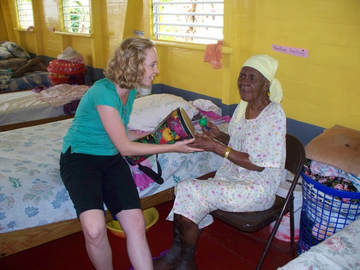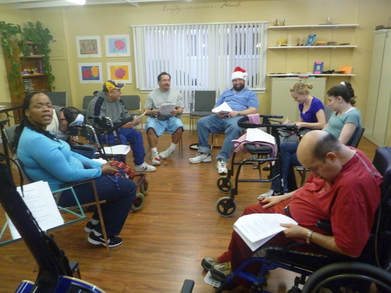|
-Meredith Manley, director I’m excited to share this blog with you about my first love, music therapy. Although a majority of my work is now teaching, I am still a practicing music therapist: I have one private client and group sessions at two different retirement communities in Plano. In my 7 years of being a board certified therapist, the one question I’ve been asked countless times is, “What exactly is music therapy?” The American Music Therapy Association (AMTA) defines it as “an established health profession in which music is used within a therapeutic relationship to address physical, emotional, cognitive, and social needs of individuals.” A music therapist uses music as a tool to help a client reach goals that are non-musical in nature (reduce pain, improve motor function, promote socialization, just to name a few). Goals are very personal to each client, and no two clients are exactly the same. It is an evidence-based practice and a music therapist must be board certified for it to be called music therapy. Working with a visually impaired client in Jamaica with the Jamaica Field Service Project How does someone become a music therapist? First, you must earn either a bachelor’s or equivalency degree in music therapy from an accredited university (there are over 70 colleges in the U.S that offer this degree). Graduate degrees (masters and doctorate) are options as well, but least an undergraduate degree is required. After the university coursework is completed, its on to the internship, which usually lasts about 6 months (we’re talking 1200 clinical hours!) After the internship is completed, the candidate is eligible to sit for the national board certification exam. Once you pass the exam, you may now call yourself a music therapist. What an exciting day it was to finally sign my name with the credentials MT-BC! (Music Therapist Board Certified) What kinds of people do music therapists work with? You can find music therapists in so many different settings, including schools, hospitals, rehab facilities, retirement communities, and private practice. With each population you work with, you learn how to use music in different ways and what interventions work best. Throughout my practicum at SMU and internship in San Diego, I worked with SO many different types of clients, and eventually I realized I wanted to focus on the senior population. After I became board certified, my first official music therapy job was with a hospice company in Chicago, and I continued with different hospice agencies for a couple of years before I decided to open a private practice. Now, I primarily work with clients who have memory impairment and/or Alzheimer’s/dementia. Internship Days: Using songwriting for self-expression with clients with Traumatic Brain Injury What have I learned as a music therapist? Music is POWERFUL. One of the reasons why I love working with individuals with memory impairment is because I occasionally see some miraculous responses that never cease to amaze me. Songs from childhood and early 20’s are usually the ones that elicit the best response, as they are well ingrained in the person’s long-term memory. It’s not uncommon for me to work with people who are nonverbal, yet they can sing every word to a song that they have a strong connection with (it’s finding that song that is challenging!) Music is so strongly tied to memory and emotion that even as the brain deteriorates from disease, even if someone can no longer speak or walk, music stays. I could probably write another blog just about the amazing things I’ve seen! Luckily, music therapy is gaining more awareness around the world thanks to news stories and social media, and it really is an exciting time to be a music therapist!
For more information about music therapy, please visit the AMTA website at www.musictherapy.org. If you know someone who might benefit from music therapy, please contact me.
0 Comments
Your comment will be posted after it is approved.
Leave a Reply. |
Archives
July 2024
Categories
All
|
|
|
MUSIC SO SIMPLE
|


 RSS Feed
RSS Feed